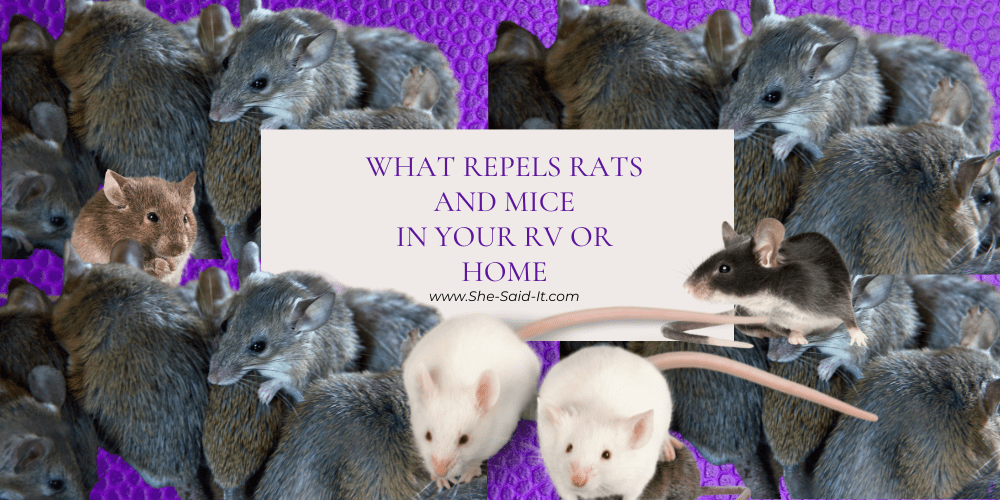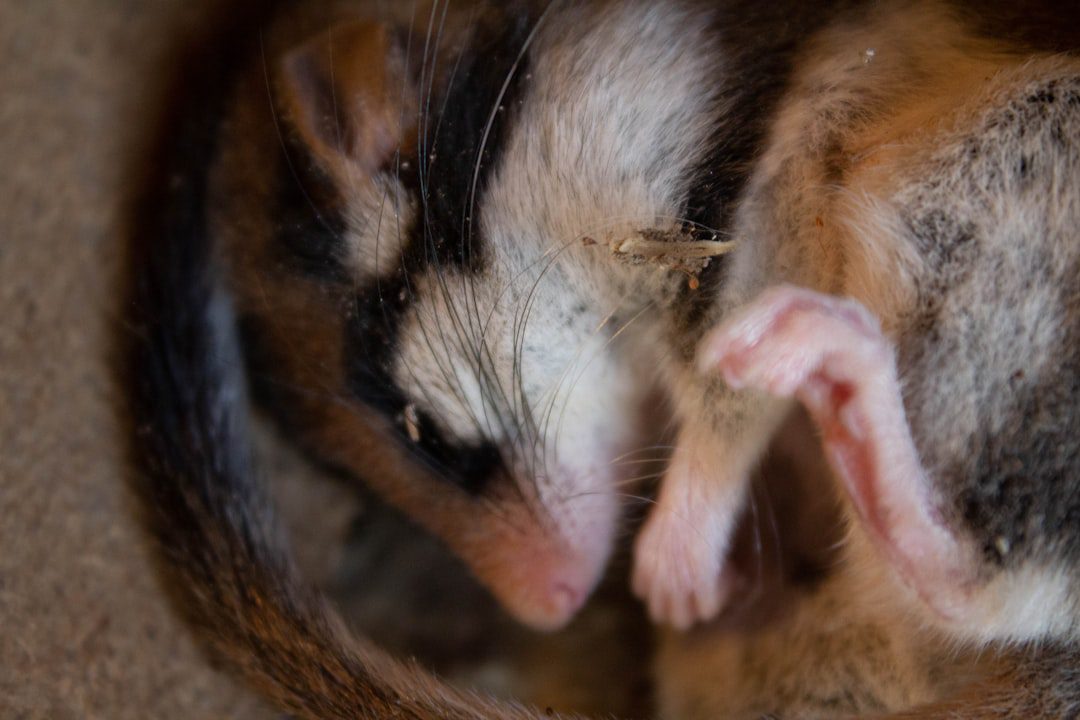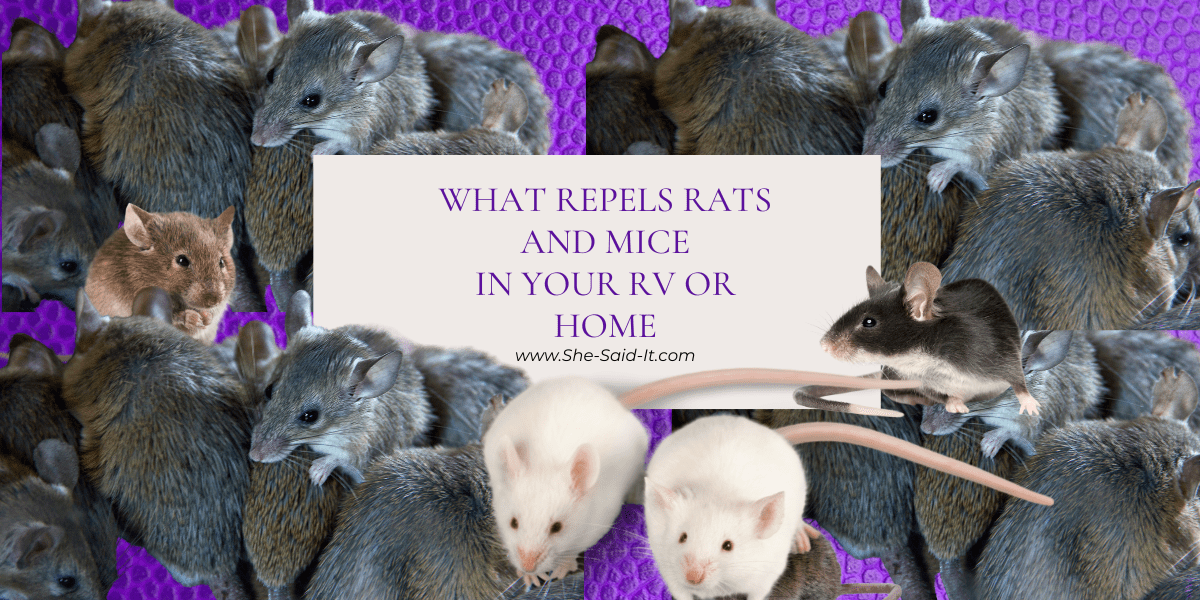How to Repel Rats and Mice
updated March 20, 2024

How to Repel Rats and Mice: A Guide for Home and RV Owners
Discovering rodents in your living space, be it a traditional home or a home on wheels, swiftly turns what may seem like adorable creatures into sources of stress and anxiety. The essence of maintaining peace within your domain lies in prevention—stopping these critters before they make your space their own. When you stumble upon the unwanted signs of their presence, from messes in your storage areas to the unmistakable sounds of their nocturnal activities, you realize the scale of the challenge at hand.
Understanding the Damage Rodents Can Cause
Rodents, with their incessant need to gnaw, pose significant risks to your property. They can compromise electrical systems by chewing through wiring, potentially leading to fires. Their nesting habits can destroy insulation, fabrics, and paper, while their droppings and urine not only spread disease but also leave a lasting, unpleasant odor. In extreme cases, the structural integrity of your RV or home could be at stake due to their relentless gnawing.
- Chewed wiring: Rodents have a natural tendency to chew on things, and this can include the wiring in your RV or camper. This can cause electrical problems and even pose a fire hazard.
- Nesting: Rodents may create nests in your RV or camper, using materials like insulation, fabric, and paper. This can cause damage to these materials, as well as create a potential health hazard if the rodents carry disease.
- Contamination: Rodents may leave droppings and urine in your RV or camper, which can cause a foul odor and potentially spread disease.
- Structural damage: In extreme cases, rodents may cause structural damage to your RV or camper by gnawing on wood, plastic, or other materials.
1. Prevention Techniques
1.1 Identify Entry Points
I have spent many months parked in my RV on a few different farms. Mice love farms and fields, it’s just their thing. When the weather turns cold rats and mice are like people, they want to move inside where it’s cozy and warm (check out our blog post about heated mattress pads)! Those little critters would love to make a nest out of the toilet paper you have stashed in one of your luggage bings, maybe its right next to your supply of dog food. You now have one freeloading happy little camper!
Mice have collapsible rib cages, which means they can get into any entrance their face can fit into. This means a thorough inspection of the exterior of your RV. You are going to want to crawl around under there with a flashlight. Might be a good idea to do this at night as well, get someone on the inside with a bright light and you on the outside looking for where the light might be shining through.
Mice can come in through your engine compartment, your underneath storage bins, or your utility access point. They can get in where your power cord enters or by climbing up your tires or jacks.
Mice can chew through a variety of materials, including wood, plastic, and rubber. Check for any signs of damage to your RV’s exterior that may have been caused by rodents. Or existing damage that could be an access point for them.
Mice may be able to enter your RV through openings in the undercarriage, so it’s important to inspect this area as well. Look for any gaps or openings in the undercarriage, and use sealant or mesh to close them off if necessary.
Mice may leave droppings or urine stains in areas where they are entering your RV. Look for these signs, as well as any chewed materials or evidence of nesting. You might also hear them at night, if you hear them it’s time to put traps out!
You can use a black light to help you identify areas where mice have urinated, as it will glow under the light. This can help you locate areas where mice have been active and may be entering your RV.
1.2 Seal Entry Points
Once you’ve identified the entry points, use a sealant to fill them in. There are a variety of sealants that work well for RVs, including silicone caulk, expanding foam, and weatherstripping. Choose a sealant that’s appropriate for the type of gap you’re trying to fill.
In addition to sealant, you can also use steel wool to block entry points. Mice won’t be able to chew through steel wool, so it’s an effective way to keep them out. Stuff steel wool into any holes or gaps that are too big to seal with caulk or foam. It’s important to use stainless steel or copper wool to prevent rust.
Mice can enter your RV through vents, so make sure to cover them with wire mesh or screening. You should also cover any other openings, such as the plumbing vent or the refrigerator vent, to prevent mice from getting in. Mice can come from above as well as below! They climb like monkeys.
Some of the recommended products for sealing and preventing entry.
2. How to Deter Rats and Mice Naturally, Chemically, or Electronically
If you are wondering how to repel rats and mice from your RV there are a few different options available using natural, chemical or electronic deterrents.
2.1 Natural Repellents
Natural repellents use ingredients that mice and other rodents find unpleasant or frightening. Some common natural repellents include peppermint oil, chili powder, eucalyptus, and citronella. These can be used in various ways, such as soaking cotton balls in peppermint oil and placing them in areas where mice are likely to enter.
Peppermint Oil – This pleasant odor is something that rodents dislike, I personally love peppermint oil. It’s important not to let your pets ingest any essential oils. Many essential oils are toxic to pets. It’s important to do your own research about home remedies such as essential oils. If you start using essential oils in your home keep an eye on your pets for any adverse reactions.
According to many studies, rats and mice spent significantly less time hanging around in places where the scent of peppermint lingered. To use peppermint oil as a repellent, just put a few drops of the essential oil on a cotton ball. Place the cotton in areas where there are signs of rat activity. You can also plant peppermint around the perimeter of your home or RV in order to help keep the rodents out. I have personally made a sachet with a cotton pad in it, I will go around and add a fresh drop of peppermint to the pad regularly particularly in the cold winter months.
When I had mice in my pantry I watched this video on youtube and it sealed the deal for me!
Does Mint Oil Actually Repel Mice? Let’s Test It Out With Real Mice. This YouTuber has some really great videos.
Chili Powder – Chili is believed to cause irritation in the nasal passage when inhaled by the rodent. These rodents won’t return to the same area where they smelled or ingested chili powder. To keep the rodents out, it’s important to sprinkle the chili powder in the rodent-infested areas every day.
Check out this video documenting What happens when you blow chili powder into a rat hole?
Eucalyptus – The potent smell of eucalyptus can prevent the rats from nesting in a house. Some homeowners prefer this essential oil to peppermint because it has a milder scent than the latter. According to a 2014 study, even a eucalyptus solution with a 5% concentration can keep the rats from stealing food in an area. Instead of putting drops of eucalyptus oil on a cotton ball, this essential oil is typically diluted in 5%, 10%, or 20% concentrations. To keep the rats at bay, make sure to spray the diluted eucalyptus solution in the rat’s pathway every day.
Citronella – Citronella is typically utilized as a mouse repellent, but it is also effective in repelling rats. A study published by the Punjab Agricultural University found out that rats avoided the food located in areas that were sprayed with citronella oil. Another effect that the scent of citronella can induce on rats is reducing their appetite. According to research published in 2015, rats that were exposed to the scent of citronella oil experienced a significant decrease in their body weight because of reduced appetite. The above information is from midway pest management.
2.2 Electronic and Light Repellents
There are products on the market that claim to repel rats and mice using sound and light. However, there is limited scientific evidence to support their effectiveness. Here’s what we know:
Sound devices: Sound devices emit high-frequency sound waves that are supposed to be uncomfortable for rodents and drive them away. However, studies have found that rodents can quickly become habituated to the sound and it may no longer have any effect on them. In addition, the sound may be unpleasant for pets and humans in the area.
Light devices: Light devices emit bright flashing lights that are supposed to startle and repel rodents. However, studies have found that rodents can quickly become habituated to the light and it may no longer have any effect on them.
Overall, it’s unclear whether sound and light devices are effective at repelling rodents. In addition, they may be unpleasant for pets and humans in the area.
Many RVers swear that electronic repellents work, for every person swearing by them, there are several videos on youtube showing that they don’t work. No judgments here, if it works for you it works for you. I watched this video and decided not to bother spending the money, I bought some snap traps instead.
2.3 Chemical Repellents
If you are wondering how to repel rats and mice using store-bought rodenticides aka POISON. You should be aware they are effective in killing or repelling mice, but their use poses a significant risk to pets, humans, and wildlife due to their toxicity. To prevent poisoning or other health hazards, it is important to carefully read the label before handling these chemicals as rat deterrents at home. Luckily, there are some natural alternatives that can be found in most households, such as ammonia, bleach, and mothballs, which all emit smells that mice dislike. Ammonia mimics the scent of predators like cats, while bleach not only repels mice but also disinfects areas with rat droppings, blood, and urine. However, mothballs should be used with caution as they contain naphthalene, which can be harmful to children and pets if ingested.
I personally do not advocate for the use of poison to control rodent problems because predators like owls, eagles, wolves, etc will ingest the poisoned critter and also be poisoned. There are better ways than poison.
In addition to the natural smell deterents discussed above, there are several chemical smells that mice and rats hate. These chemicals can be found in standard household products, so you likely already have them in your home. Here are some household items that make excellent rodent repellents:
Ammonia
The strong smell of ammonia is another scent that mice and rats hate. They cannot stand ammonia’s sharp, pungent odor, so using it around your home can help prevent them from entering your home and stop them from nesting in your walls.
You can use ammonia to clean areas where rodents have been, or you can soak some cotton balls in them and place them around your home.
Just be careful when using ammonia, as it can harm your skin and lungs if inhaled. And make sure to wear gloves and a mask when using this cleaning product.
Bleach
Bleach is another standard household product that can be used as a rodent repellent. The pungent smell of bleach is unpleasant to these animals, so using it around your home can help keep them away.
You can mix it with water and spray it around your home, then monitor the area to see if the rodents are repelled after a few days.
Be sure to use bleach safely, as it can be toxic if inhaled or ingested. Wear gloves and a mask when using this cleaning product, so you don’t breathe in the fumes.
Mothballs
Mothballs emit a strong, pungent smell that these animals cannot stand. You can place them around areas where you’ve seen mice or rats, or you can put them in any enclosed spaces where these rodents might be hiding.
You can also make a rat-repellent spray using mothballs. Just place a few mothballs in a water bowl and let them dissolve. Then, pour the solution into a spray bottle and use it to mist areas where you think rodents might be entering your home.
Do not use too much of this spray, as the strong smell of mothballs can harm your health if inhaled. Be sure to open windows and doors if using this spray to ventilate your home.
Thank you to fox-pest.com for sharing this information with me.
How to Repel Rats and Mice – Housekeeping tips
- Keep your RV clean: Rodents are attracted to food sources, so keeping your home clean and free of food debris can help prevent infestations. This includes cleaning up spills and crumbs immediately, wiping down countertops, and storing food in airtight containers. Makes sense to clean using bleach OR ammonia – please note never mix these two chemicals!!!!!!
- Seal up entry points: Rodents can squeeze through small openings, so it’s important to seal up any cracks or gaps in walls, doors, and windows. Use caulk or weatherstripping to seal up these areas. We talk about this a lot!!
- Store trash properly: Make sure to keep your trash in sealed containers and take it out regularly to prevent rodents from being attracted to the smell.
- Keep clutter to a minimum: Rodents like to hide in cluttered areas, so keeping your RV, inside and outside, organized and clutter-free can help prevent infestations.
- Check for signs of infestation: Keep an eye out for signs of rodent infestations, such as droppings, gnaw marks, and tracks. If you notice any signs of an infestation, take action immediately to prevent it from getting worse. Clean the areas immediately.
- Use nature: Planting some eucalyptus, peppermint, or citronella will help keep rodents and other pest away from your yard.
Use of Screens on Vents and Windows
Screens on vents and windows can help deter rodents by creating a physical barrier that prevents them from entering your home. Rodents are able to squeeze through very small openings, so screens with small enough gaps can prevent them from entering.
Vents and windows are common entry points for rodents, as they often have gaps or openings that allow rodents to enter. By installing screens on these openings, you can create a barrier that prevents rodents from getting inside.
Screens also help to improve the ventilation of your RV while keeping rodents out. By allowing air to flow through, screens help to keep your home cool and comfortable without having to leave windows or vents open, which can provide easy access for rodents.
3. You Know There is A Mouse – Now What?
First of all, there is never just one mouse. Your only option is to get rid of them. There is no living harmoniously with rodents. They carry diseases, they make a huge mess, and they will destroy your RV or your home. There. are two types of traps; traps that kill. and catch and release aka ‘humane’ traps. Please note there is NOTHING humane about the sticky slow death traps, please, just don’t.
3.1 Kill Traps
When I had an invasion, it was only 3, that I know of, but it was absolutely the worst! Listening to them all night in the pantry which is pretty close to my bed. I used the classic style snap traps like from cartoons in the 80’s. A little peanut butter.
I have peppermint essential oil everywhere, and I am not currently parked on a farm. The only problem with the more expensive snap traps is I feel obligated to reuse them. The old Victory ones I have just dumped them in the garbage loaded with the dead mouse no need to reuse them if you are squeamish.
3.2 Humane
There are several types of humane mouse traps available on the market and many you can DIY.
- Live-catch traps: These traps capture mice alive and unharmed, and allow you to release them outside. These traps typically consist of a box or cage with a door that closes when the mouse enters.
- Bucket traps: These traps consist of a bucket filled with water, with a ramp leading up to the top of the bucket. When the mouse climbs up the ramp to get to the bait at the top, they fall into the bucket and are unable to climb out.
- Multi-catch traps: These traps are designed to catch multiple mice at once, and are typically used in situations where there is a large infestation. They usually consist of a box or cage with multiple entry points and an internal mechanism that prevents the mice from escaping.
When using humane mouse traps, it is important to take care when handling the captured mice to ensure their safety. Make sure to release them in a suitable location that is far away from your home or other areas where they could cause damage or harm. Additionally, it’s important to make sure that the traps are set up properly
Watch this amazing peanut oil in a bowl video! Wow, just wow! A Bowl Of Peanut Oil Catches 7 Mice In 1 Night. Shawn Woods has just about every type of rodent trap experiment on video. There are quite a few of the humane style traps that actually work. This is something I plan to set up for on my rural property. Definitely have encountered some mice!
3.3 Placement and Monitoring of Traps
Proper placement and monitoring of mousetraps is important for effective rodent control. Here are some tips to keep in mind:
- Identify areas of high rodent activity: Check for signs of rodent activity, such as droppings, gnaw marks, or grease marks along walls and floors, to determine where to place the mousetraps.
- Place mousetraps in strategic locations: Place the mousetraps along walls, in corners, and near areas where rodents are likely to travel. Avoid placing the traps in the middle of a room, where they are less likely to be effective.
- Use enough mousetraps: Use several mousetraps in the same area to increase the chances of catching a rodent. A good rule of thumb is to use one mousetrap per 10 linear feet of wall.
- Choose the right type of mousetrap: There are several types of mousetraps available, including snap traps, glue traps, and live traps. Snap traps are the most common and effective type, but make sure to choose the right size for the type of rodent you are trying to catch.
- Bait the mousetraps: Use a small amount of bait, such as peanut butter or cheese, to lure rodents to the mousetraps. Be careful not to use too much bait, as it can cause the trap to malfunction.
- Monitor the mousetraps: Check the mousetraps regularly to see if you have caught any rodents. Dispose of dead rodents properly and reset the mousetraps as needed.
Not to sound like a broken record, but remember, mousetraps are just one component of an effective rodent control program. To prevent future infestations, it’s important to seal off entry points and remove sources of food and shelter for rodents.
4. You Tried Everything Else….
It might time to get a cat. I know having a cat might not seem practical for life on the road, but if you are stopped somewhere for a few weeks maybe your local feline rescue would let you take care of a kitty for a few weeks. That is a win-win you can help get a cat a home and the cat can help you rehome your unwanted house guests!
5. Don’t Quit
If you managed to get rid of them once go back to phase one of how to repel rats and mice. The best plan of attack begins with how to prevent mice in an RV or your home, or your car, or your garage. An ounce of prevention is worth a pound of cure as they say!
Irish spring soap doesn’t work. It really doesn’t. Many many folks have returned to their rig’s winter storage to find mice have eaten the soap and made nests from the dryer sheets.

 How to repel rats and mice
How to repel rats and mice






